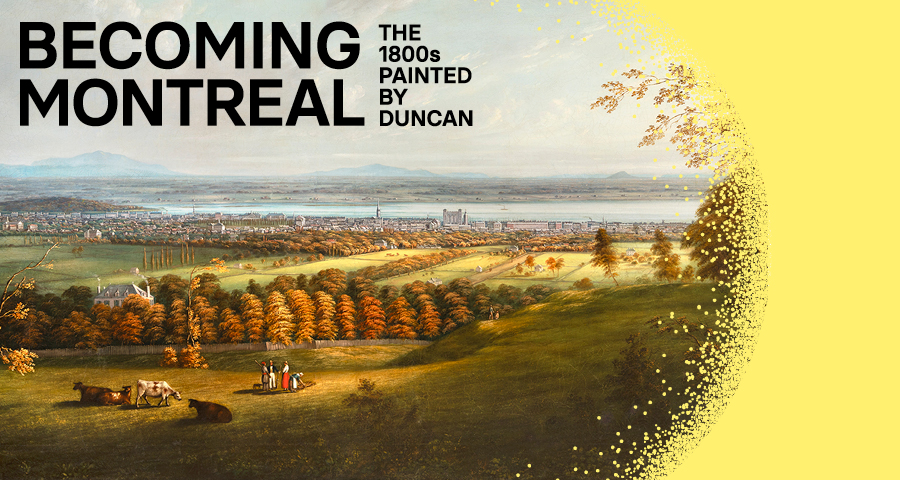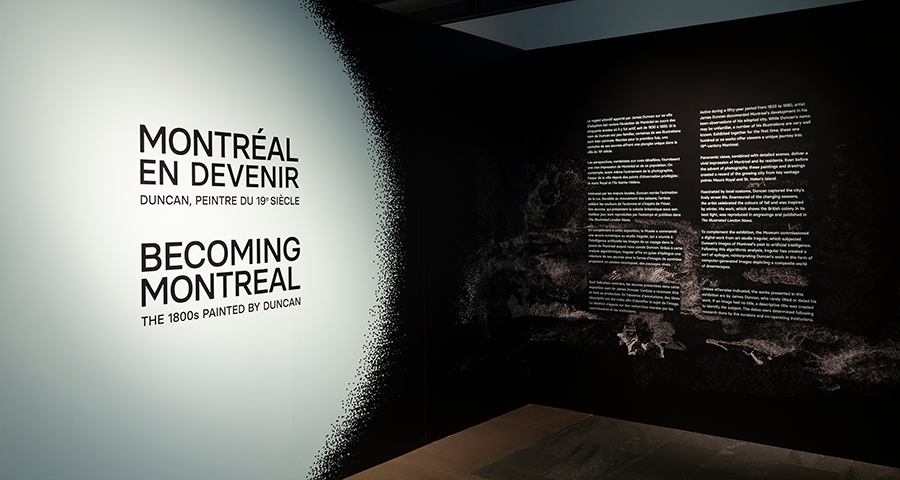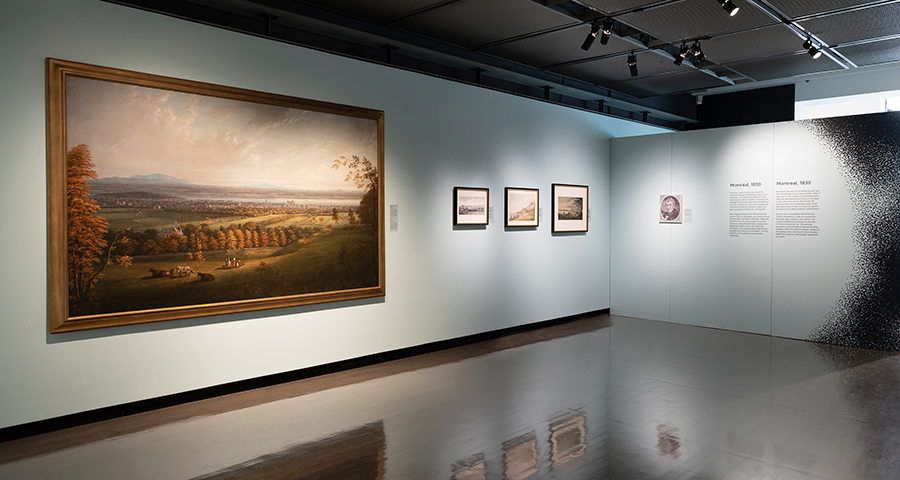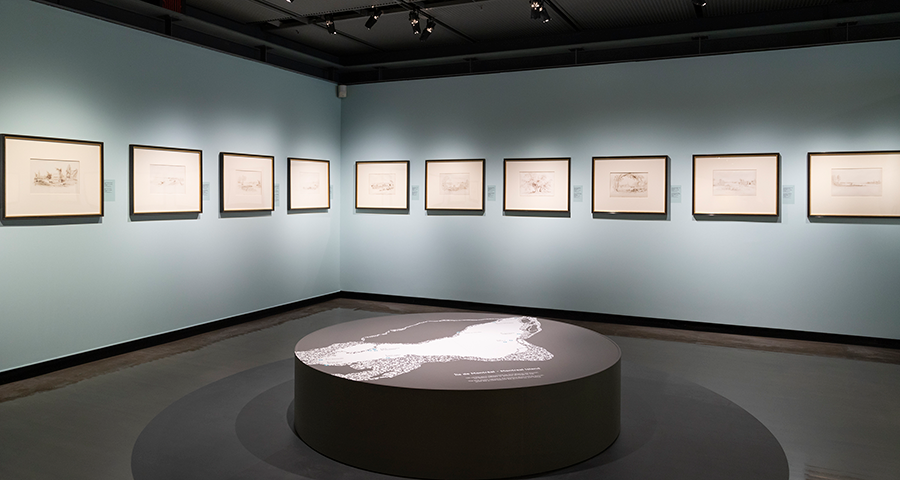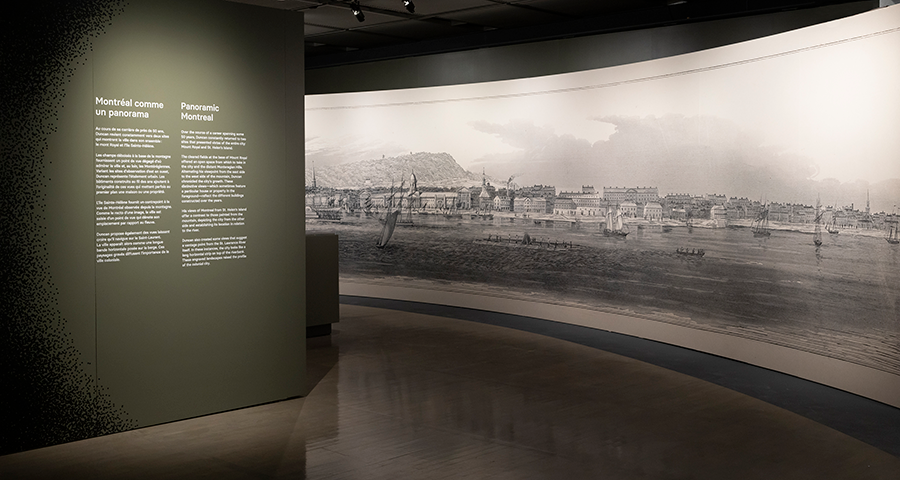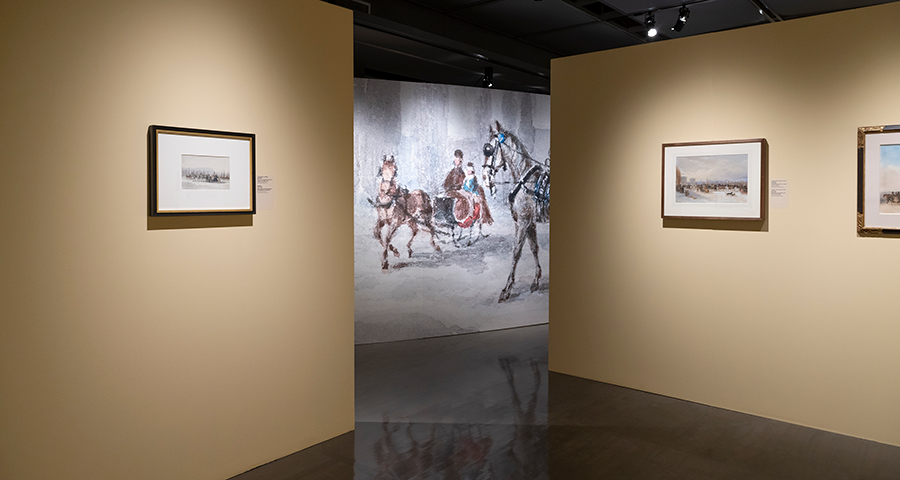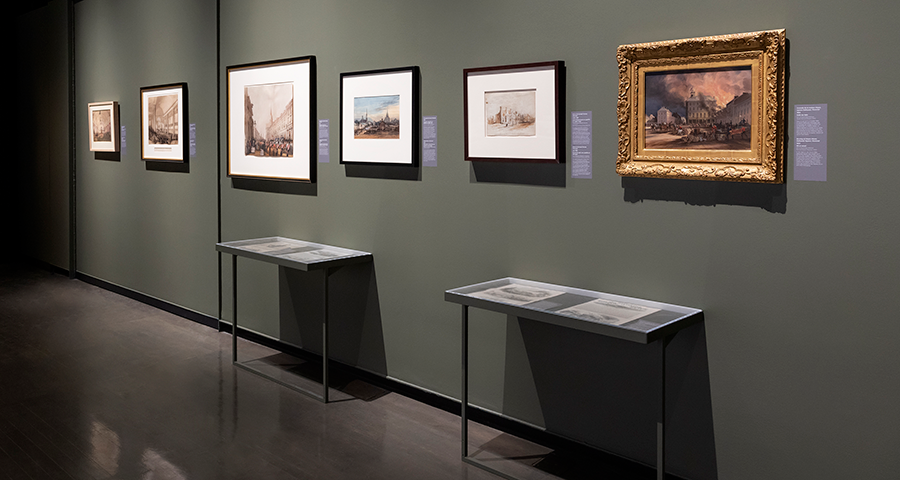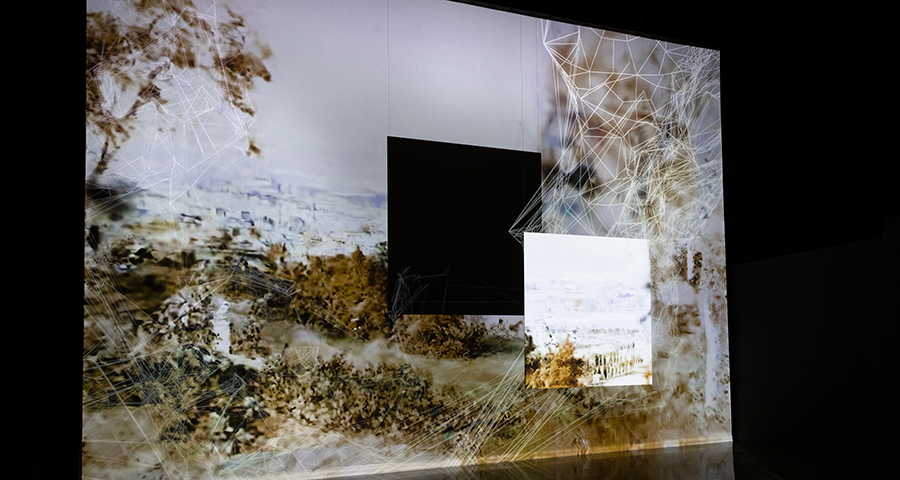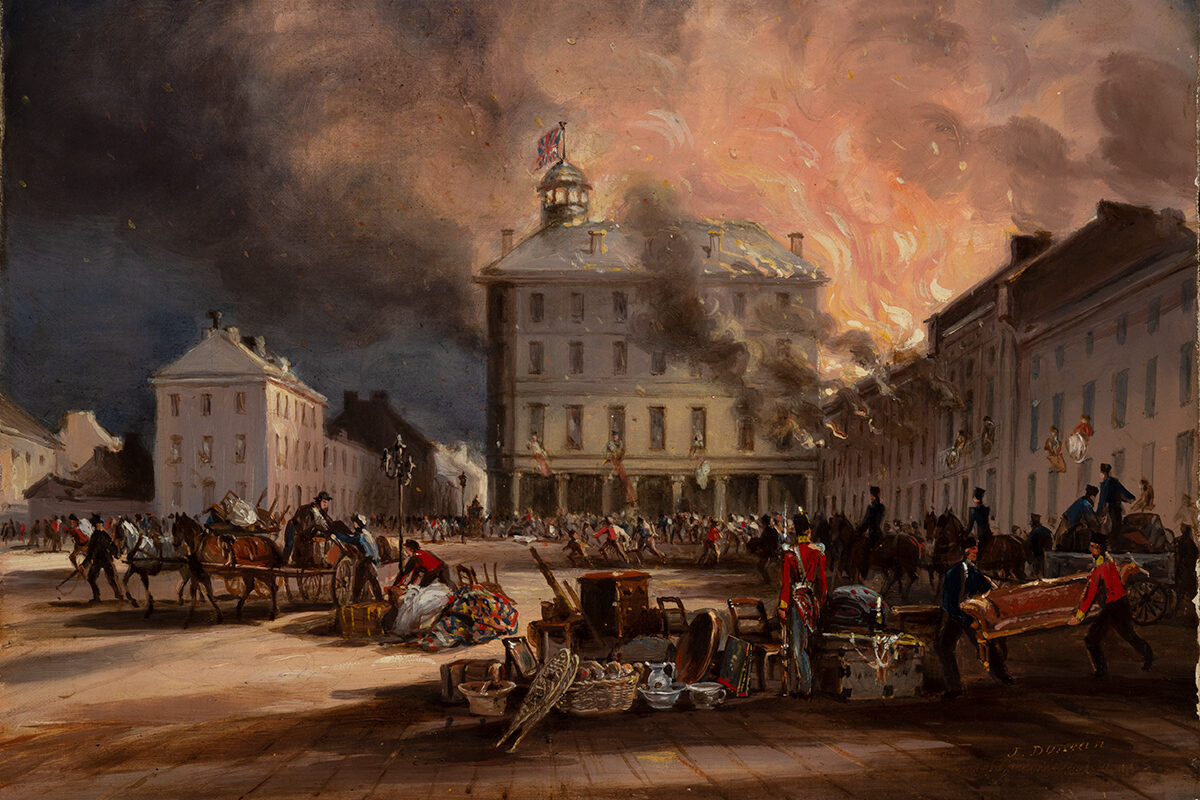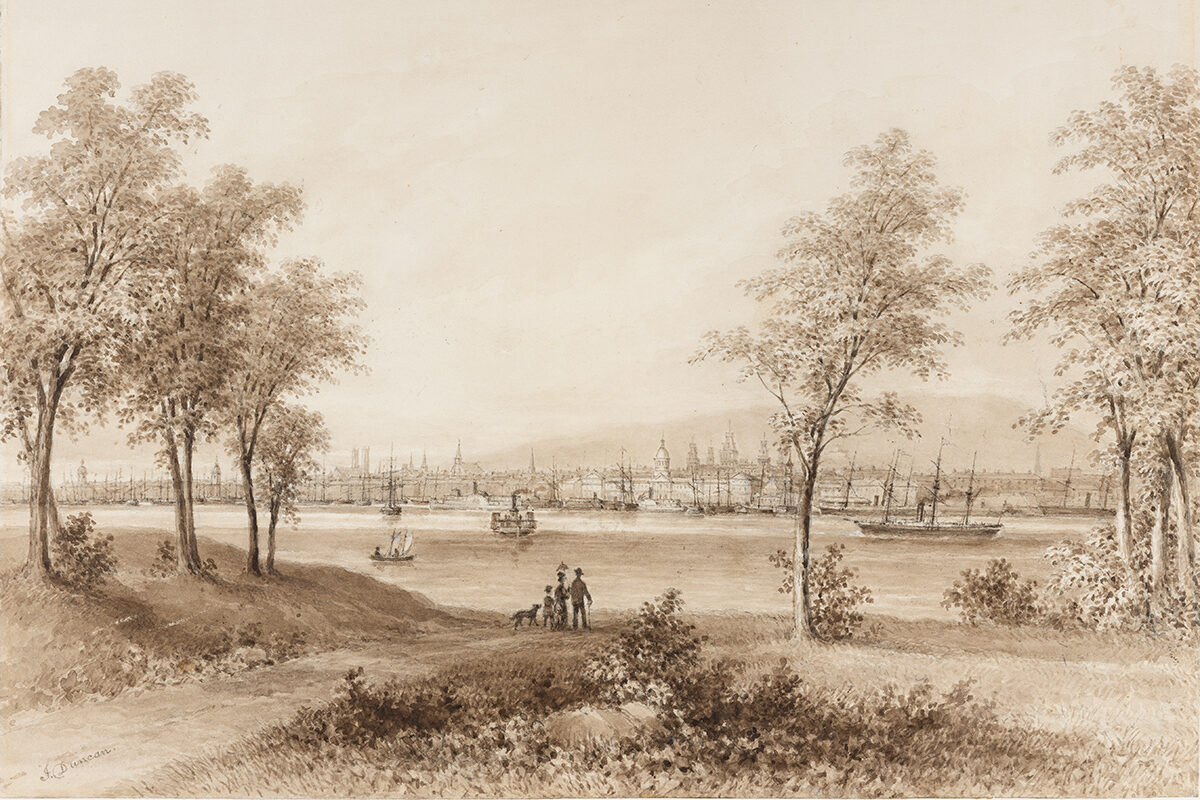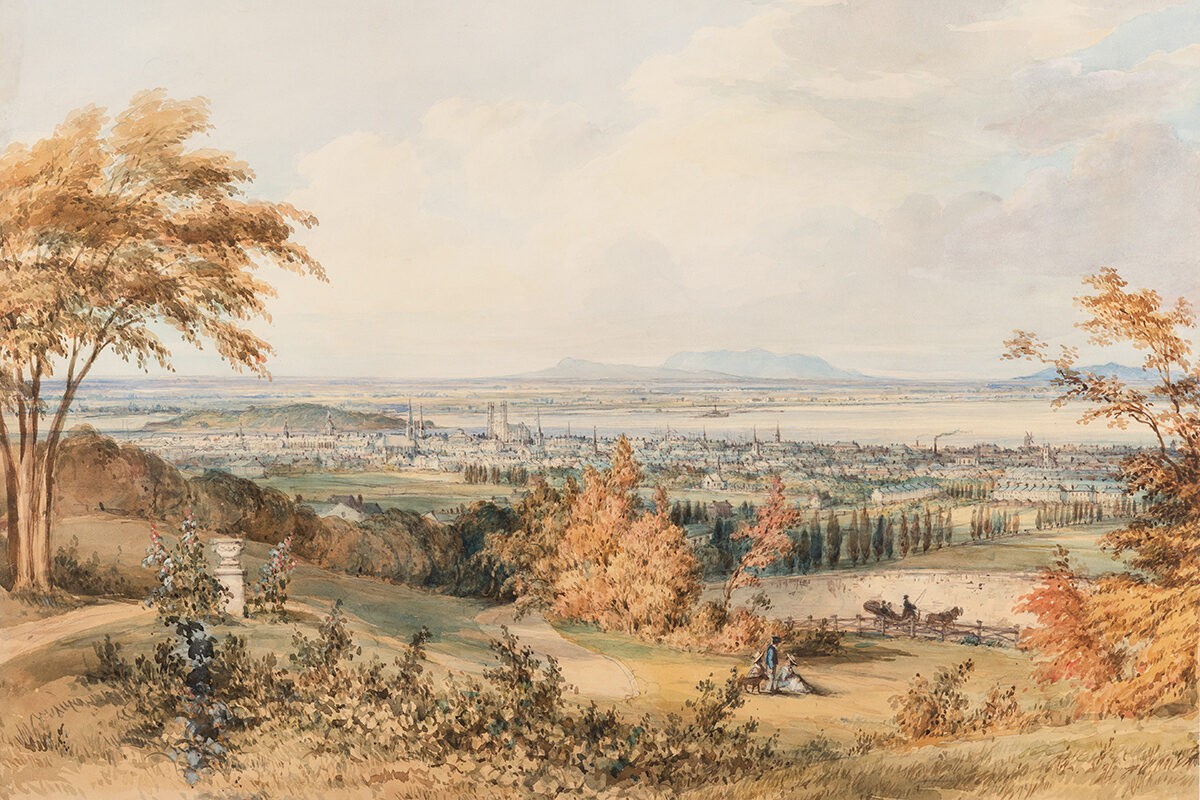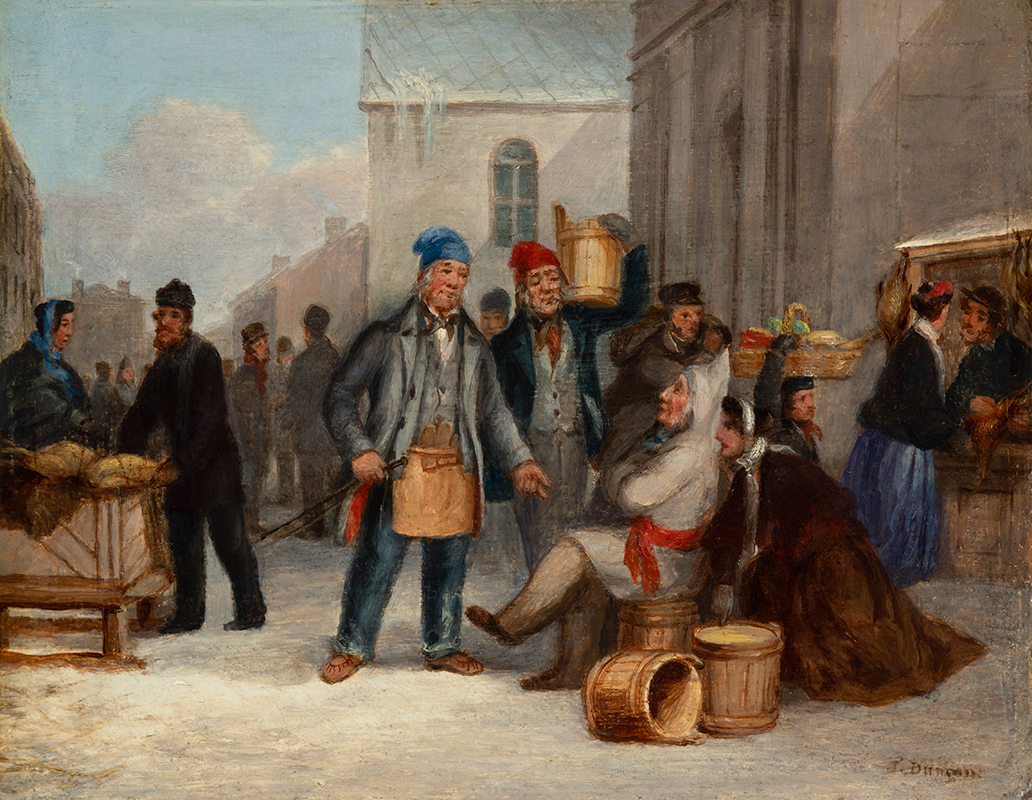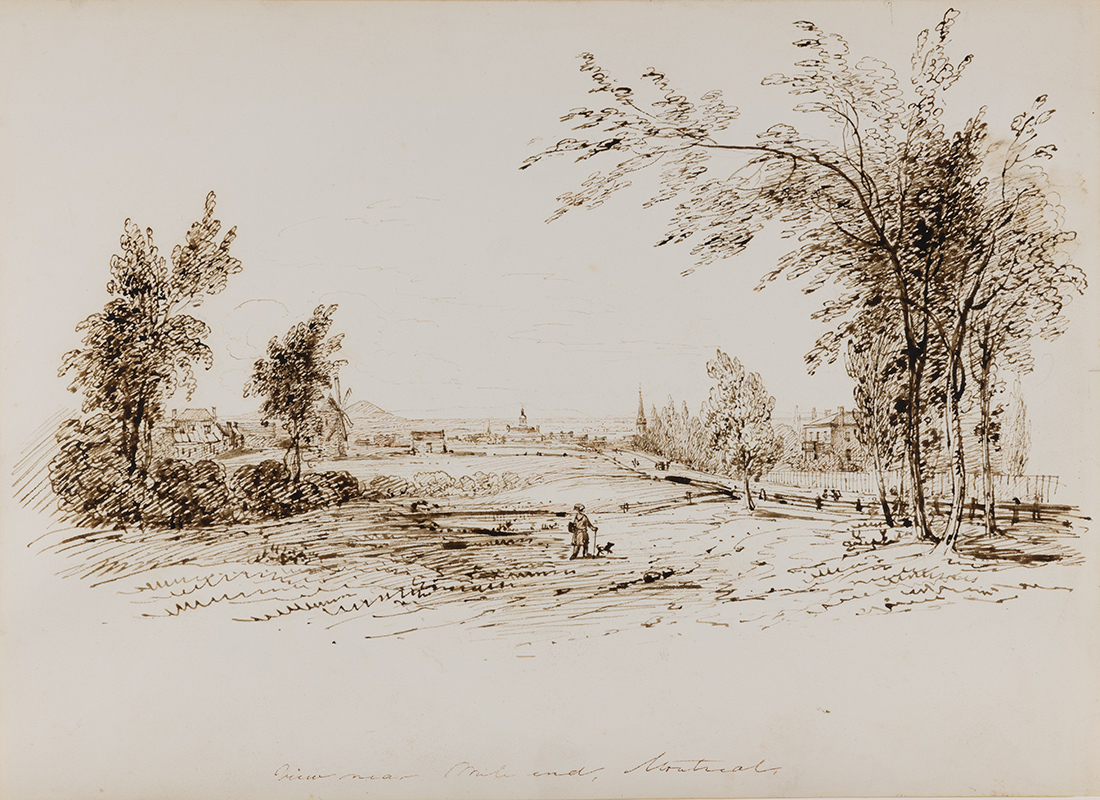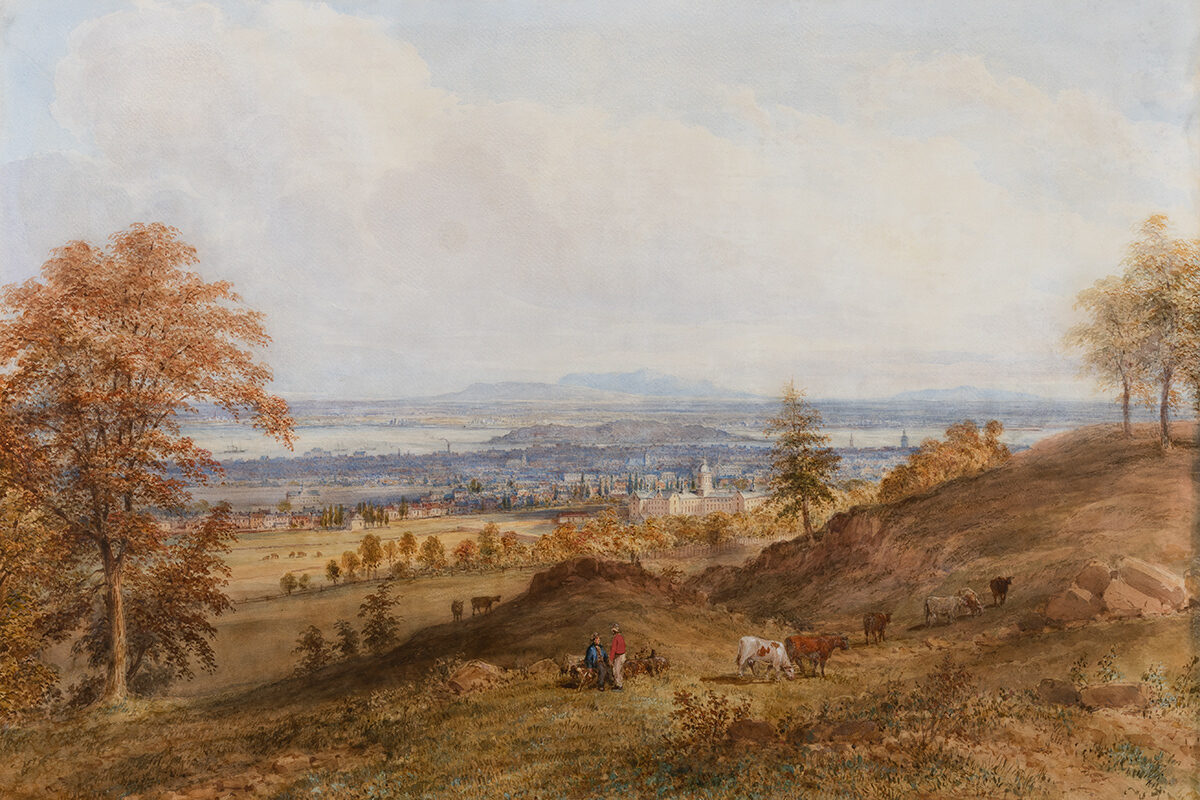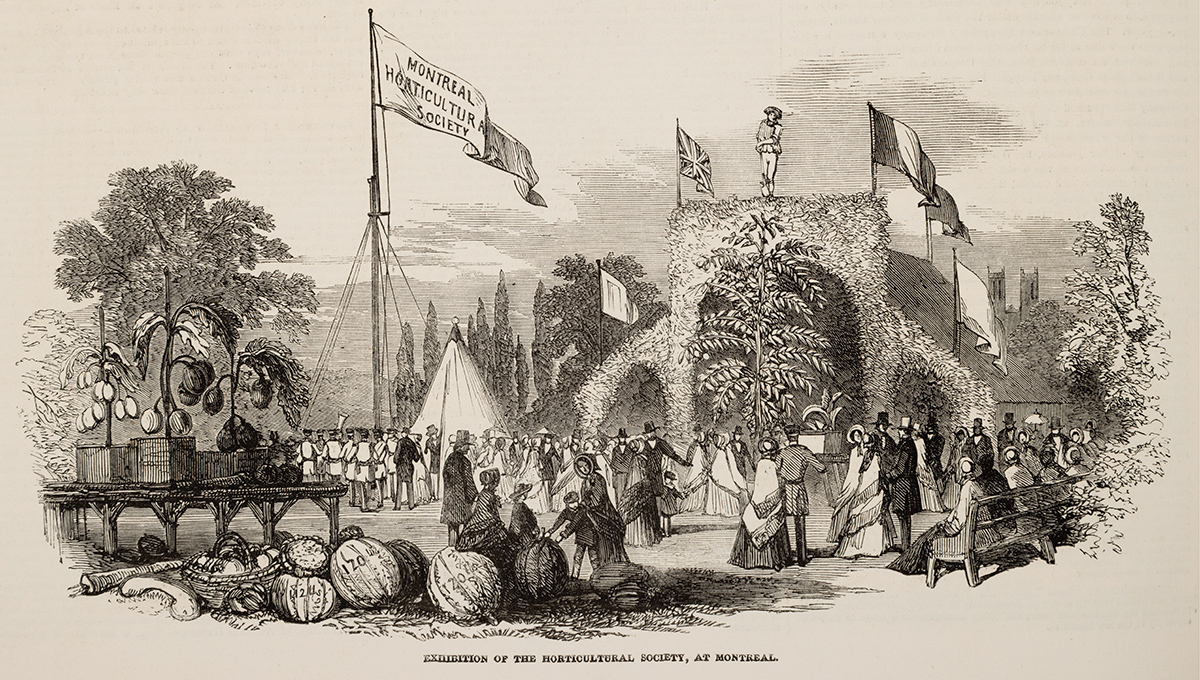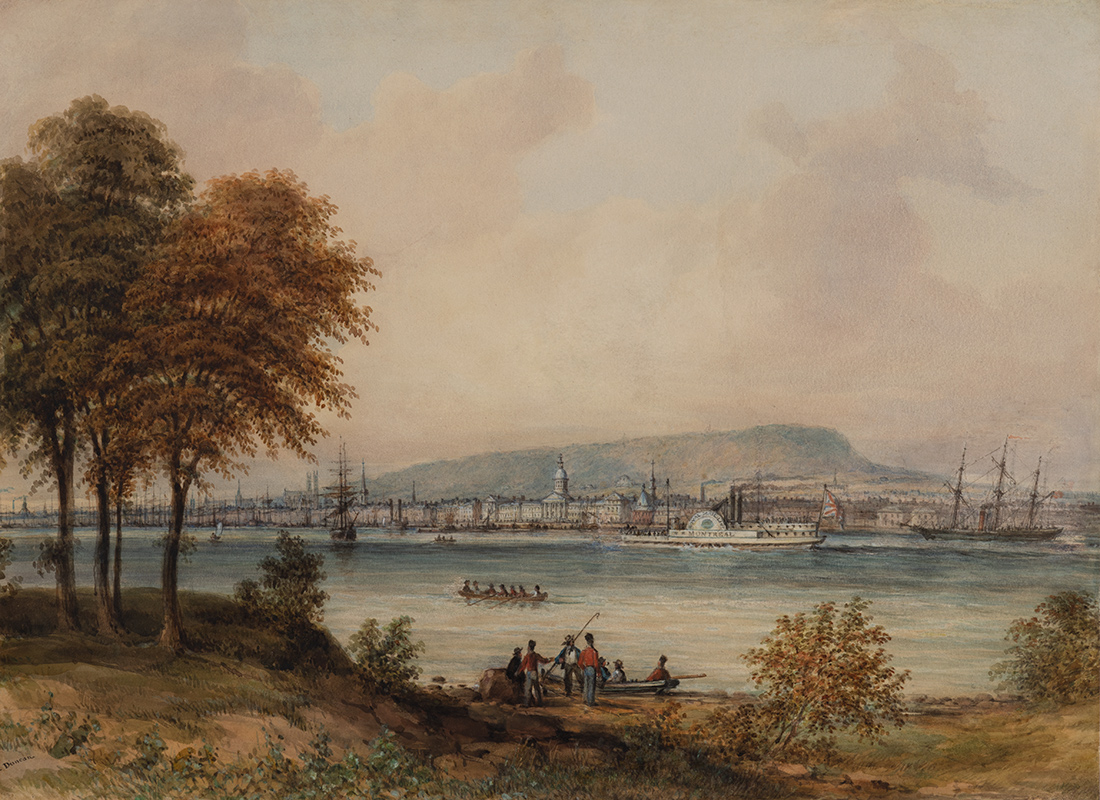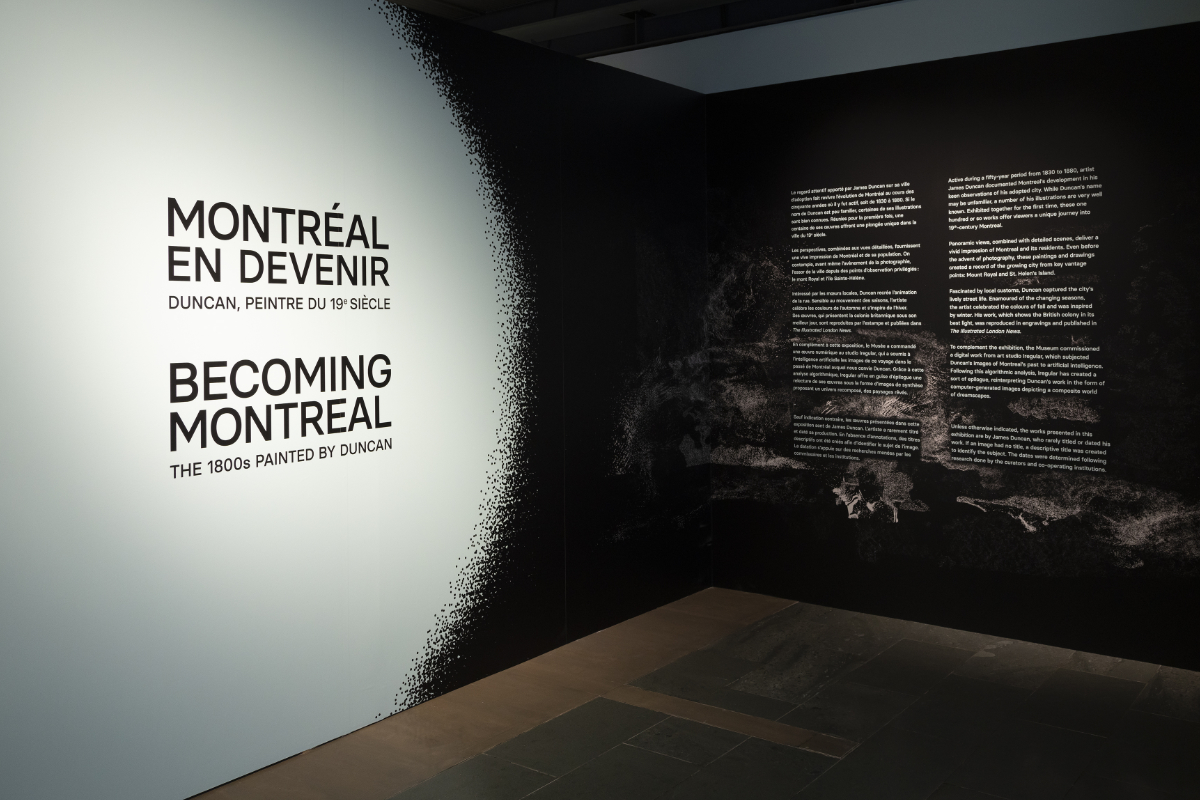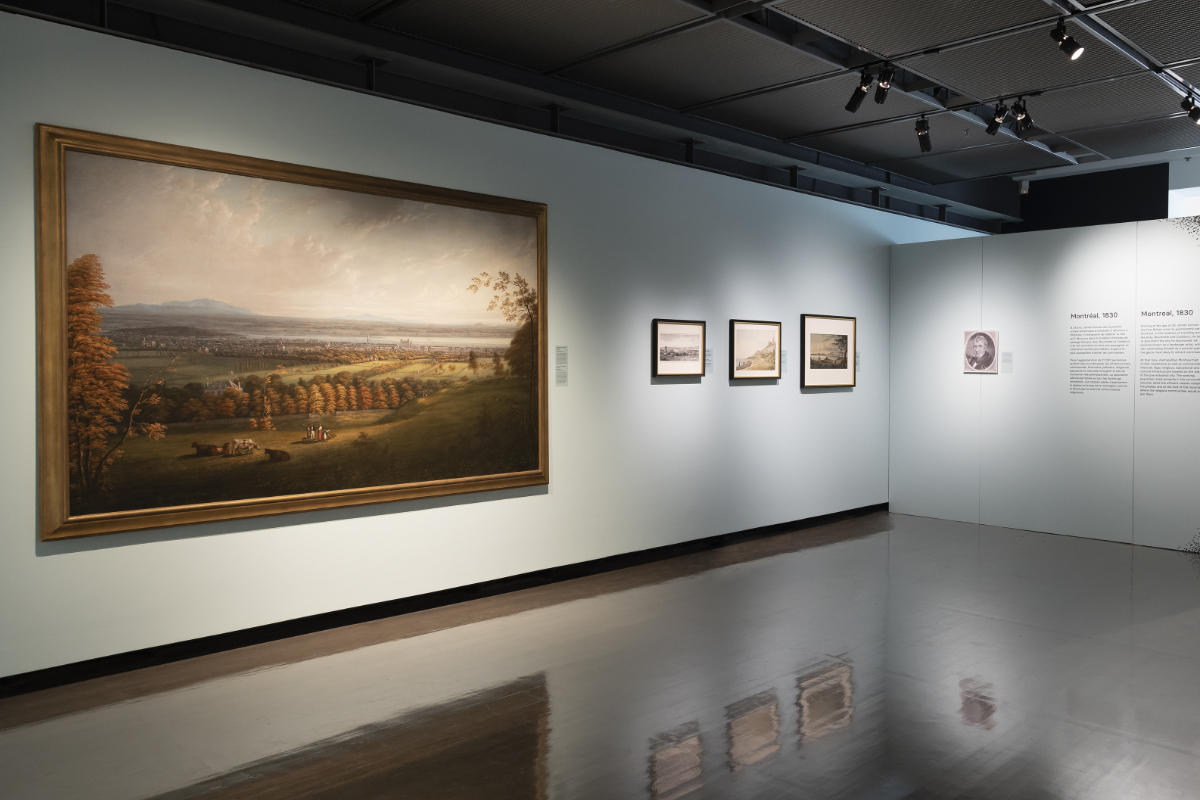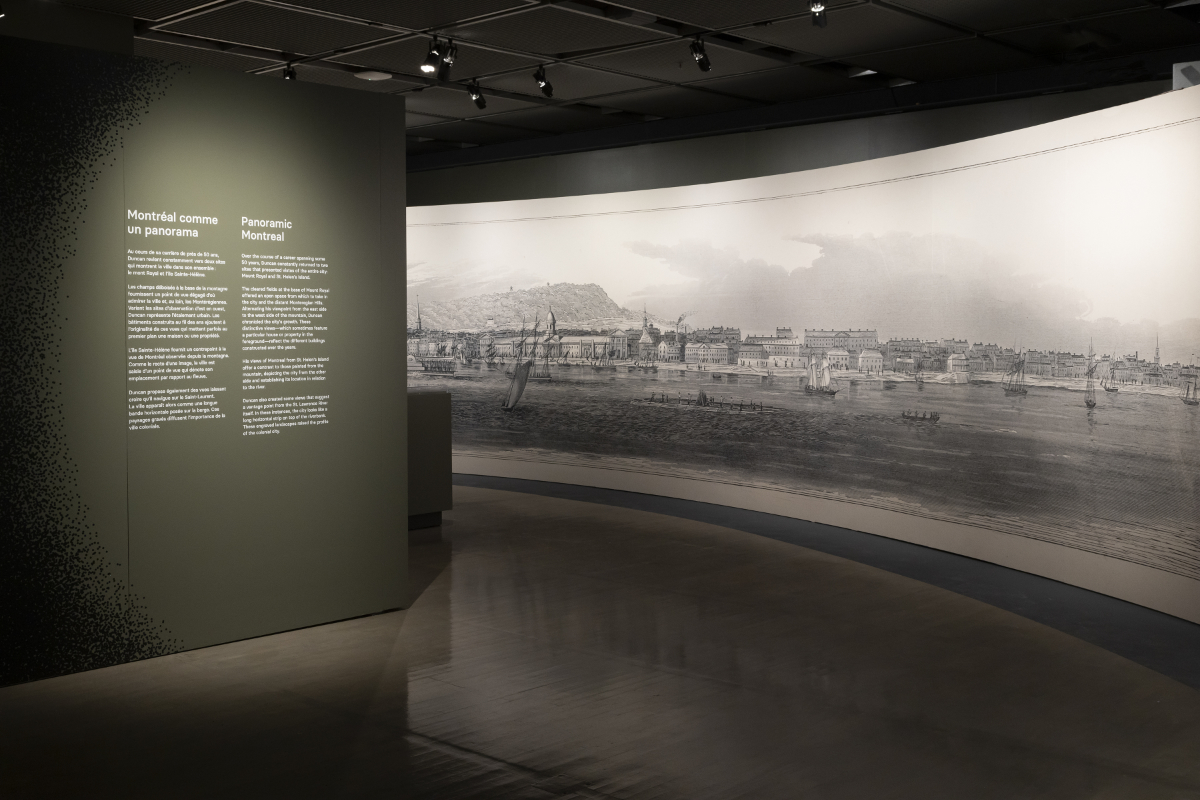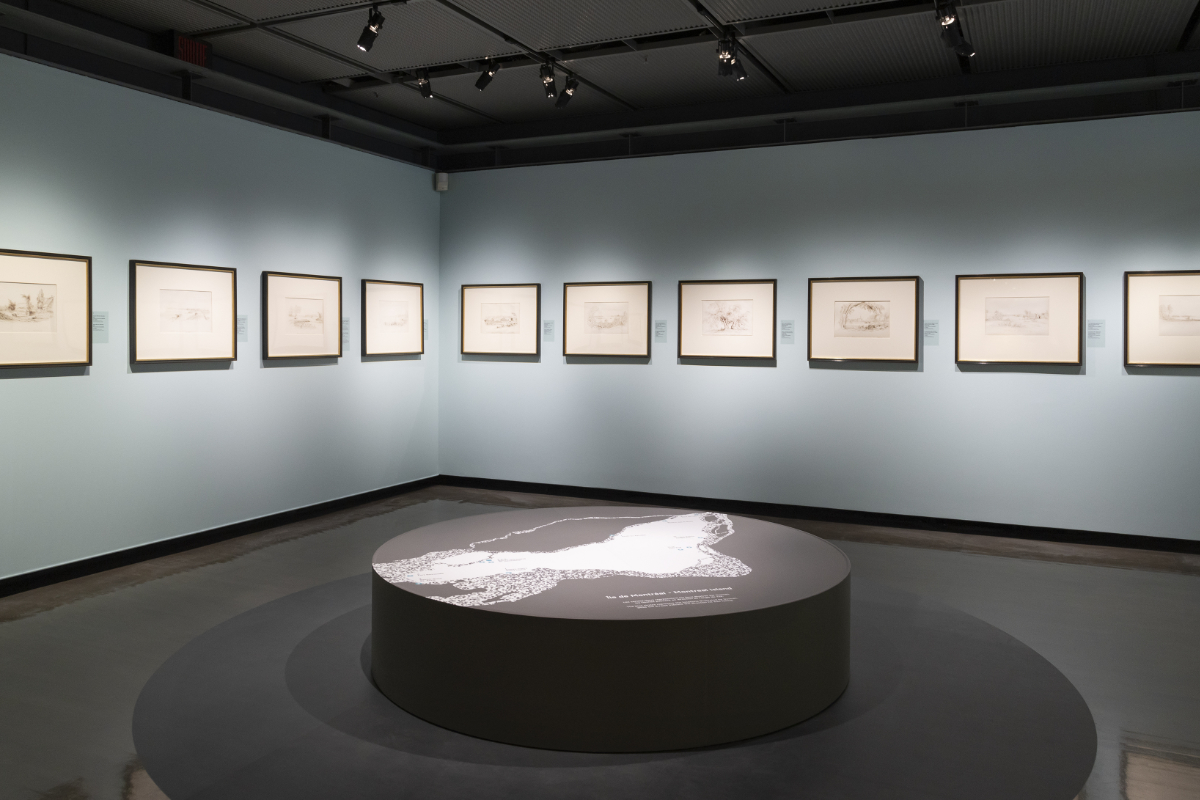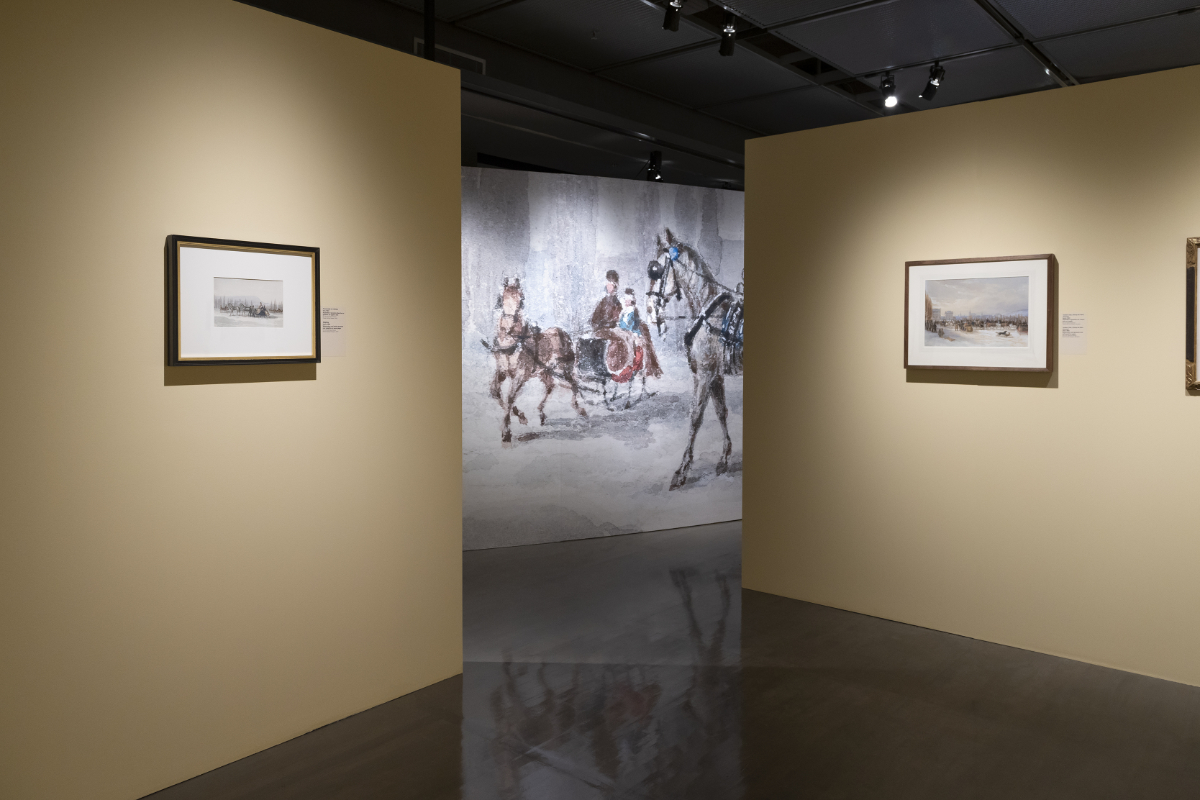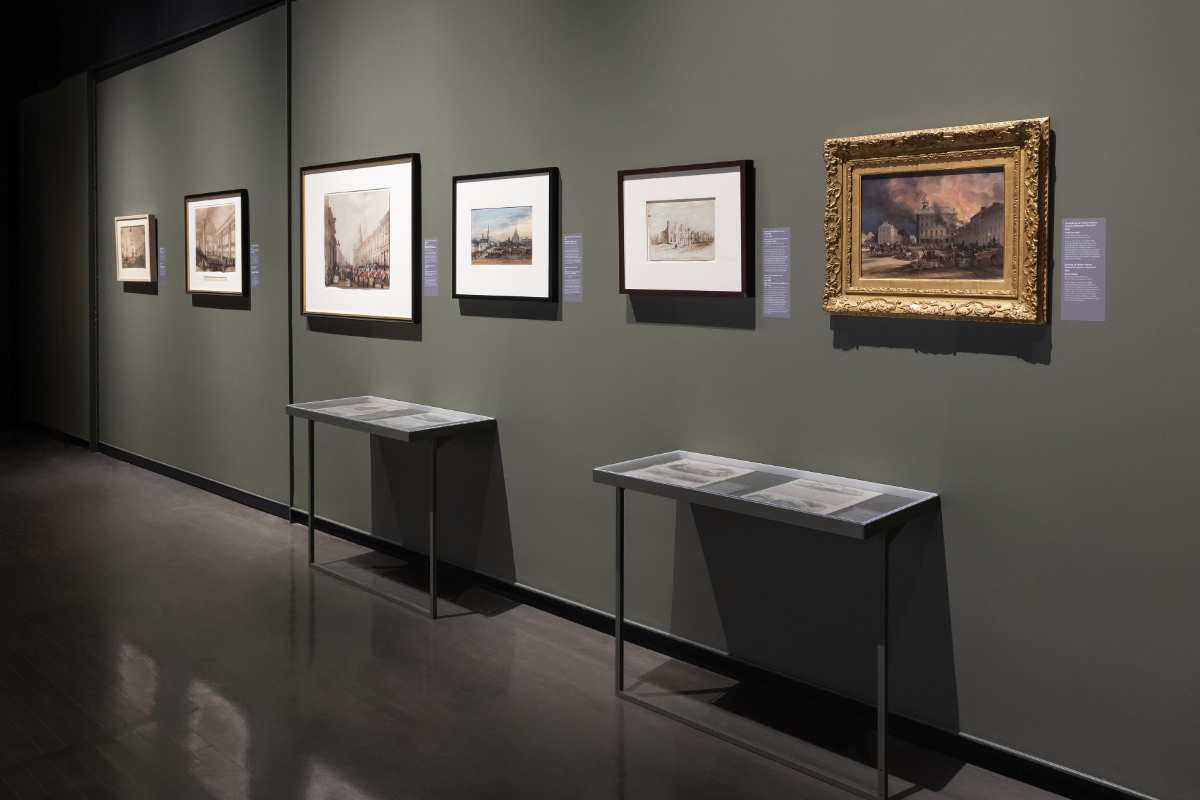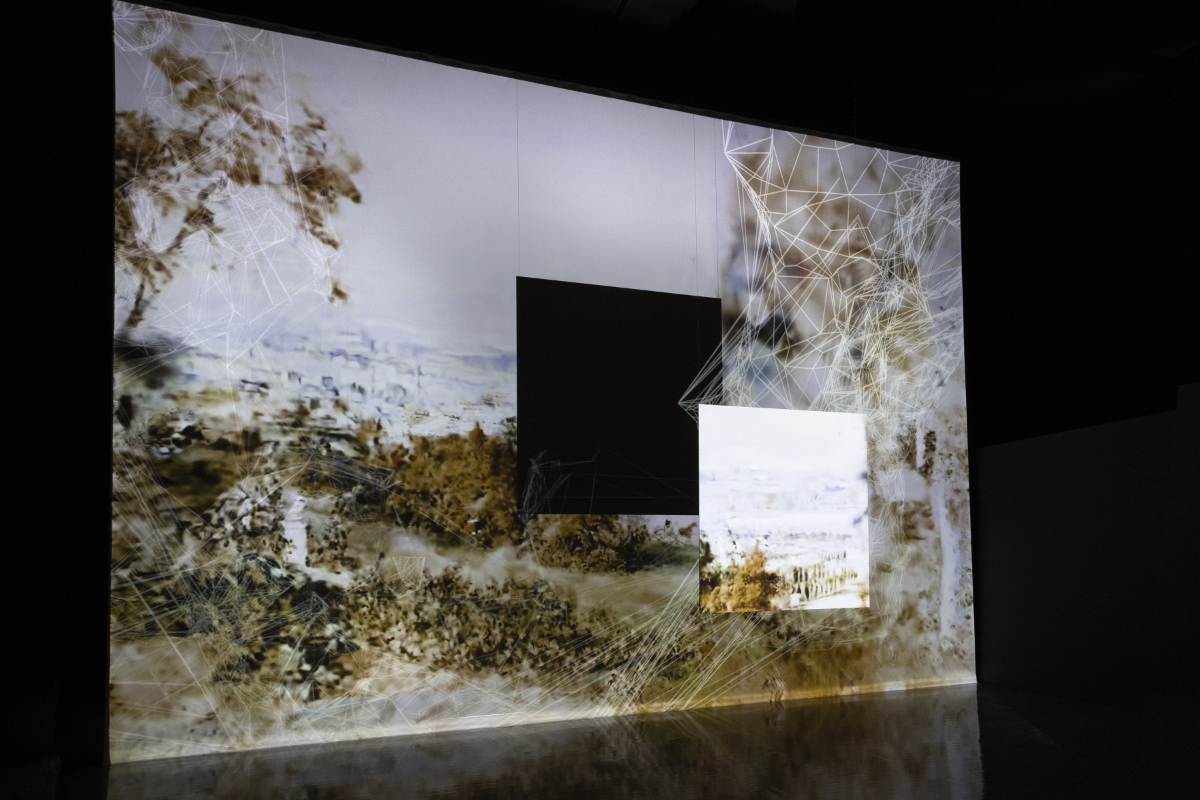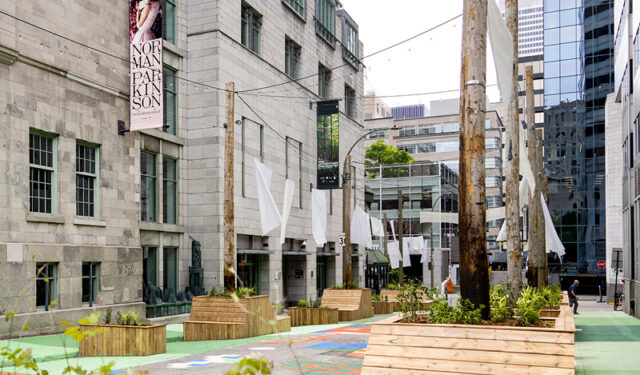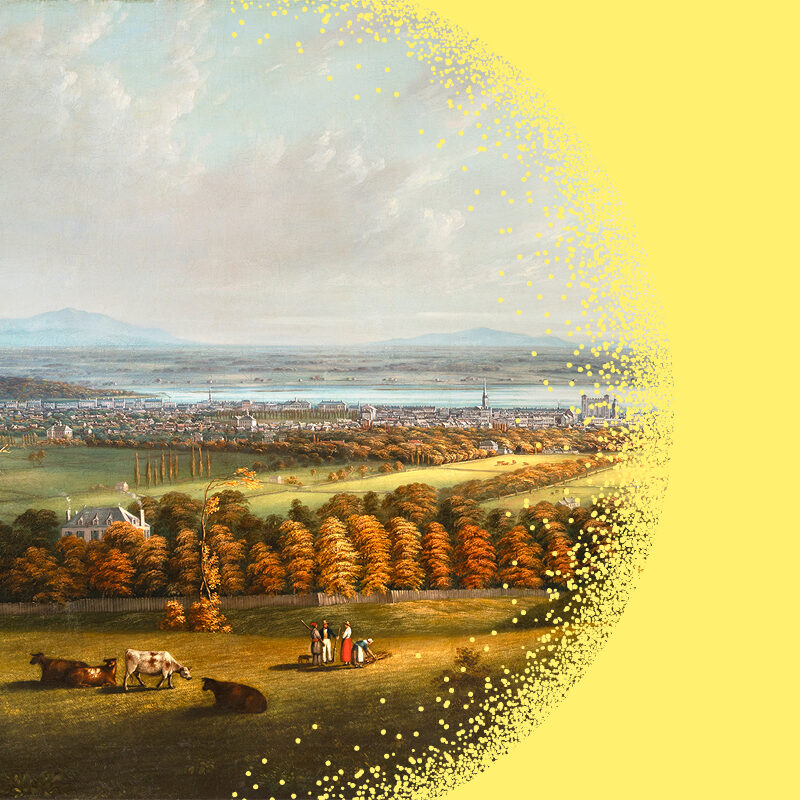News
May 31, 2023
Becoming Montreal: The 1800s Painted by Duncan
Press Release
From town to metropolis: Montreal revealed though five decades of watercolours at the McCord Stewart Museum
Montreal, May 31, 2023. – From June 2, 2023, to April 21, 2024, the McCord Stewart Museum presents Becoming Montreal: The 1800s Painted by Duncan. With this first retrospective devoted to the painter and watercolourist James Duncan, the Museum continues its cycle of exhibitions dedicated to the transformation of Montreal’s urban landscape, this time focusing on a pivotal period in the growth of Montreal into the metropolis it is today. Curated by Christian Vachon, Curator of Documentary Art and Head of Collections Management at the McCord Stewart Museum, and Laurier Lacroix, C.M., Professor Emeritus, Université du Québec à Montréal, the exhibition presents the artist’s many views, which, when combined, provide a vivid and detailed portrait of the city from the 1830s to the late 1870s. Visitors will discover the island’s topography, Montreal’s cityscape, and scenes from the life of its inhabitants. As a sort of epilogue, the digital artwork studio Iregular reinterprets Duncan’s work in the form of computer-generated images depicting a composite world of dreamscapes of a Montreal that no longer exists. The exhibition is presented by La Presse.
Precursor of photojournalism
A true chronicler of his time, James Duncan documented the city’s evolution over the five decades he was active there. The scenes he painted, some of which were published in the British press, provide an invaluable visual record before photography could capture current events. Duncan had a front-row seat to chronicle the happy and tragic events that make up everyday life in Montreal. During this period, the agglomeration grew from a medium-sized town of a few 27,000 souls to a metropolis with a population of more than 140,000. In the exhibition, visitors can see this rapid transformation from the artist’s favourite viewpoints: Mount Royal and St. Helen’s Island.
“This collection of more than one hundred of Duncan’s works allows us to follow the evolution of his career and also of Montreal. Through his panoramas, Duncan kept track of the changes that were reshaping the city. The suite of building views in Hochelaga Depicta (1839), for example, shows in detail the British colonial town at one stage of its development,” says Laurier Lacroix.
Duncan also witnessed the construction of Montreal’s Canadian identity within the British Empire. This identity, which was constructed with a clear desire to distinguish itself from the United States and Great Britain, involved appropriating Indigenous practices as popular recreational activities. Works illustrate lacrosse games, snowshoe races and tobogganing.
Love for Montreal
Particularly interested in local customs, the artist paints the hustle and bustle of the street as city dwellers go about their daily activities. Sensitive to the movement of the seasons, he celebrates the colours of fall and is remarkably inspired by winter. Since he mainly earned a living from commissions and sales to tourists, James Duncan’s work focuses on aspects of Montreal that are perceived as exotic by foreign audiences: winter, clothing, market scenes, transportation, recreation, and features of the urban physical environment.
“Duncan was one of the first British artists to settle permanently in Montreal. Looking at his work, you can see that he loved his adopted city. I hope that people will discover a side of the city’s history that they didn’t know, and will remember that Montreal is a splendid and unique city, and always has been,” says Christian Vachon.
Duncan rediscovered
This first retrospective will introduce the public to the artistic merits of a painter who was quickly forgotten after his death:
“Even at the end of his life, critics in the newspapers called him old, because the attention was now on younger painters with a more modern style. Museums and collectors rediscovered him much later, taking an interest in the documentary quality of his work, rather than its aesthetic qualities. He became known for his views of Montreal, which closely tracked the developments shaping the city. Yet his talent as a landscape painter is undeniable. The exhibition celebrates both the documentary value of Duncan’s work and his talent as a landscape artist,” says Christian Vachon.
“I had a superficial understanding of Duncan from the few images most often reproduced. I discovered a painter who’s attentive to the city’s evolution, a unique witness to the habits and customs of urban life, a talented artist involved in Montreal’s community and educational life. Through Duncan, we get a glimpse at a little-known chapter of Montreal’s history,” says Laurier Lacroix.
“Drawing on the formidable collection of the McCord Stewart Museum, the generosity of many national museums and private collections, and the extensive research of the curators, Becoming Montreal: The 1800s Painted by Duncan provides a rare opportunity for the public to discover Montreal pre–industrial revolution. This project is in line with the Museum’s mission to showcase and document the city’s history, the diversity of its neighbourhoods, and the energy of its urban life, all of which make it a top destination today,” says Anne Eschapasse, President and CEO of the McCord Stewart Museum.
MENTAL MAPS – Digital artwork by Iregular
To complement this exhibition, the Museum commissioned a piece from the digital art studio Iregular, who fed James Duncan’s images of yesteryear Montreal to artificial intelligence. The studio then designed a three-dimensional virtual world of computer-generated images made of layers of superimposed topographies.
“When we started to work on MENTAL MAPS a year ago, the intention was simply to visualize how the artistic decisions of James Duncan and his resulting body of work deeply influenced the depiction of Montreal in people’s imagination. Fast forward to the present, with the rise of artificial intelligence and machine learning systems becoming commonplace, the value of MENTAL MAPS now resides in how it’s helping us better understand the power of AI, and the role we humans carry in a world where such systems possess the capability to generate intricate images from simple prompts on a computer,” says Daniel Iregui, artist and founder of Iregular.
The experiential work offers a vision of what the world could look like through the eyes of someone whose entire reality is modelled after an artist’s illustrations. Visitors are invited to wander through this virtual space, as their moving shadows hide or reveal unexpected layers. The result is a unique, constantly changing experience that creates shifting dreamscapes derived from Duncan’s work.
The McCord Stewart Museum gratefully acknowledges the support of the Canada Council for the Arts in the production of the digital work presented in this exhibition.
Credits and curatorial team
An exhibition conceived and organized by the McCord Stewart Museum.
Project Manager: Catherine K. Laflamme, McCord Stewart Museum
Curators: Laurier Lacroix, C.M., Professor Emeritus, Université du Québec à Montréal, and Christian Vachon, Curator, Documentary Art and Head, Collections Management, McCord Stewart Museum
Exhibition designers: Anick La Bissonnière and Eric-Olivier Lacroix
Graphic design: David Martin
Digital work: Iregular
Book: James Duncan (1806-1881) – Painter of Montreal
James Duncan (1806–1881) – Painter of Montreal is the first monograph dedicated to James Duncan. More than 160 works by the artist reveal different facets of his career and immerse the reader in 19th century Montreal. The book includes three essays that enrich our understanding of Duncan’s work: a comprehensive biography by Laurier Lacroix, C.M., Professor Emeritus at the Université du Québec à Montréal; a review of three albums containing Duncan’s work by Arlene Gehmacher, L.R. Wilson curator of Canadian Art and Culture at the Royal Ontario Museum; and a study of Duncan’s depictions of Montreal published in The Illustrated London News by Christian Vachon, Head of Collections Management and Curator of Documentary Art, at the McCord Stewart Museum. A new chronology completes the book.
James Duncan (1806-1881) – Painter of Montreal
210 pages
Publisher: McCord Stewart Museum
Distributor: Publications du Québec and McCord Stewart Museum Boutique
On sale at the Museum Boutique for $55
ISBN: 978-1-7-7389247-1-4 (EN: 978-1-7-7389247-0-7)
Download the documents
Press release (PDF)
Press release (WORD)
Press images
Activities related to the exhibition
The Art of James Duncan: Conversation with the exhibition’s curators
Wednesday, September 27, 2023, 6 p.m. – Free – At the Museum and online
In light of their research, the exhibition’s curators will compare James Duncan’s career with the changes that reshaped Montreal’s arts scene from 1830 to 1880. Learn more about the artist’s approach, which involved making replicas and variations of the same compositions, revisiting some of his favourite themes over and over again. Hear how he helped forge and disseminate Montreal’s social identity at the time through his engravings and illustrations.
Curators:
- Laurier Lacroix, Professor Emeritus, Université du Québec à Montréal
- Christian Vachon, Head of Collections Management and Curator of Documentary Art, McCord Stewart Museum.
Presentation in French followed by a Q&A in French and English. Space is limited, reservation required on the Museum’s website.
Journées de la culture - Cityscape workshop with Urban Sketchers Montreal
Drawing workshop
October 1, 2023, 10 a.m. to 4 p.m. – Free – At the Museum
Urban Sketchers Montréal and the McCord Stewart Museum invite the public to a cityscape drawing workshop. Artists of all levels and backgrounds will be able to gather and create around the work of watercolourist James Duncan, with Montreal and its landscapes as inspiration.
Material not provided. We recommend that you bring a sketchbook and a pencil, pen or watercolours, depending on your preference.
Activity in French and English. Space is limited, reservation required on the Museum’s website.
Art fair – Contemporary views of Duncan
October 1, 2023, 10 a.m. to 5 p.m. – Free – At the Museum
Throughout the summer, artists from Urban Sketchers Montréal will be creating drawings from the same points of view as some of Duncan’s work. The artists will present their creations in the Atrium of the Museum and will be on hand to meet the public.
Duncan’s work revisited by artificial intelligence – Exclusive visit with Daniel Iregui, founder of Iregular
Wednesday, March 27, 2024, 5:30 p.m. and 7 p.m. – Paid – At the Museum
The public is invited to take part in an exclusive tour with Daniel Iregui, digital artist and founder of Iregular, who designed the interactive installation for the exhibition Becoming Montreal: The 1800s Painted by Duncan. Participants will discover how the digital art studio has used artificial intelligence, informed by all of Duncan’s available works, and a projection that incorporates the viewers’ movements, to create this unique immersive experience!
Activity in English. Space is limited, reservation required on the Museum’s website.
Fees : General Admission : 10 $ | Museum Members : 5 $ | Students : 5 $ | Members of Indigenous communities : gratuit
The McCord Stewart Museum
About
The McCord Stewart Museum showcases life in Montreal, past and present. Rooted in the heart of the city for more than 100 years, it bears witness to the creativity, diversity and vitality of the communities that make up the metropolis. While engaged in a process of decolonization and sustainable development, it designs and creates educational, cultural and community exhibitions and activities that take a critical and inclusive look at social history and contemporary issues. As the custodian of a remarkable heritage, its collections—Archives, Documentary Art, Dress, Fashion and Textiles, Indigenous Cultures, Material Culture and Photography—containing 200,000 objects and works of art, 2,150,000 photographs, 3,500 rare books and 340 linear metres of textual archives, position it as one of the leading history museums in North America.
Iregular
About
Founded in Montreal in 2010, digital art studio Iregular creates audiovisual installations, architectural projections and scenographies, with a focus on interactive and immersive experiences. At the crossroads between art and technology, these artworks experiment with geometry, light, algorithms, communication protocols and AI. Iregular’s work has been shown in 25 countries.
Opening hours and admission fees
Opening hours
- Regular schedule (Until June 25 and starting September 5)
Tuesday, Thursday and Friday from 10 a.m. to 6 p.m. | Wednesday from 10 a.m. to 9 p.m. | Saturday and Sunday from 10 a.m. to 5 p.m. - Summer schedule (June 26 to September 4)
Monday, Tuesday, Thursday and Friday from 10 a.m. to 6 p.m. | Wednesday from 10 a.m. to 9 p.m. | Saturday and Sunday from 10 a.m. to 5 p.m. - Holiday hours:
Saint-Jean-Baptiste Day – Saturday, June 24: 10 a.m. to 5 p.m.
Canada Day – Saturday, July 1 10 a.m. to 5 p.m.
Labour Day – Monday, September 5: 10 a.m. to 6 p.m.
Thanksgiving – Monday, October 9: 10 a.m. to 6 p.m.
Christmas – Monday, December 25: closed
Boxing Day – Tuesday, December 26: 12 to 6 p.m.
New Year’s Day – Monday, January 1: closed
The day after New Year’s – Monday, January 2: 12 to 6 p.m.
Spring Break – Monday, February 4: 10 a.m. to 6 p.m.
Easter Monday – Monday, April 1 10 a.m. to 6 p.m.
Fees
Adults: $20 | Seniors: $19 | Students (13 to 30): $15 | Indigenous persons: free | Family package: $50 (fixed rate for two adults and two teenagers) | 12 and under: free
Wednesday evening: free (3rd floor exhibition and permanent exhibition) or $10 (2nd floor exhibition).First Sunday of the month: free for Quebec residents.
The McCord Stewart Museum would like to thank BMO Financial Group for the free Wednesday evenings, and the Fondation J.A. DeSève for free admission for children 12 and under.
To create the best possible experience for everyone, it is recommended to reserve tickets online for the Museum and activities, whether paid or not. Go to the Admissions page on the Museum’s website.


